Steven A. Webber, MBChB, MRCP
Dean, College of Medicine
Executive Vice Chancellor, UAMS

Dr. Steven Webber is a highly regarded pediatrician, researcher and leader in academic medicine who is internationally known for his expertise in solid organ transplantation in children. He began serving as executive vice chancellor of the University of Arkansas for Medical Sciences and dean of the UAMS College of Medicine on March 1, 2024.
Dr. Webber was recruited to UAMS from Vanderbilt University School of Medicine in Nashville, Tennessee, where he had served since 2012 as the James C. Overall professor and chair of the Department of Pediatrics and pediatrician-in-chief of Monroe Carell Jr. Children’s Hospital. He previously held leadership positions at the University of Pittsburgh and Children’s Hospital of Pittsburgh including chief of the Division of Pediatric Cardiology, co-director of the Heart Institute, and medical director of the Thoracic Transplantation Program.
Dr. Webber has received continuous funding for his research focused on solid organ transplantation in children for over 25 years. He has published more than 240 peer-reviewed scientific publications and is the co-author of three textbooks. He has served as president of both the Pediatric Heart Transplant Study, which is an international research consortium, and the International Pediatric Transplant Association. He also has served as chair of the Thoracic Committee of the United Network for Organ Sharing and as a member of the boards of directors of the American Society of Transplantation and the International Society for Heart and Lung Transplantation.
Born in London, Dr. Webber graduated first in his class from the University of Bristol Medical School in Bristol, England. He completed his internal medicine residency at University Hospitals of Leicester in England and his pediatric residency at university Hospital Nottingham and John Radcliffe Hospital, Oxford. Dr. Webber continued his training with pediatric cardiology fellowships at the University of British Columbia and B.C. Children’s Hospital and at Children’s Hospital of Pittsburgh, University of Pittsburgh.
Previous Deans
- G. Richard Smith, M.D., Interim, 2023-2024
- Susan S. Smyth, M.D., Ph.D., 2021-2022
- Christopher T. Westfall, M.D., 2018-2021
- Pope L. Moseley, M.D., 2015-2018
- G. Richard Smith, M.D., 2013-2015
- Debra H. Fiser, M.D., 2006-2013
- E. Albert Reece, M.D., Ph.D., M.B.A., 2002-2006
- John P. Shock, M.D., Interim, 2000-2002
- I. Dodd Wilson, M.D., 1986-2000
- Glen Baker, M.D., Interim, 1986
- Peter O. Kohler, M.D., Interim, 1985-1986
- Thomas A. Bruce, M.D., 1974-1985
- Winston K. Shorey, M.D., 1961-1974
- F. Douglas Lawrason, M.D., Interim, 1955-1960
- Hayden Nicholson, M.D., 1950-1955
- William C. Langston, M.D., Interim, 1948-1950
- Joseph T. Roberts, Jr., M.D., Ph.D., 1947-1948
- Benjamin B. Wells, M.D., Ph.D., Interim, 1947
- H. Clay Chenault, M.D., 1946-1947
- Byron L. Robinson, M.D., 1941-1946
- Stuart P. Cromer, M.D., Ph.D., 1939-1941
- Frank Vinsonhaler, M.D., 1927-1939
- Arthur R. Stover, M.D., Interim, 1923-1924
- Morgan Smith, M.D., 1912-1923, 1924-1927
- James H. Lenow, M.D., 1907-1912
- Edwin Bentley, M.D., 1904-1907
- James A. Dibrell, Jr., M.D., 1886-1904
- Philo Oliver Hooper, M.D., 1879-1886
G. Richard Smith, M.D.
Interim, January 2023 – February 2024
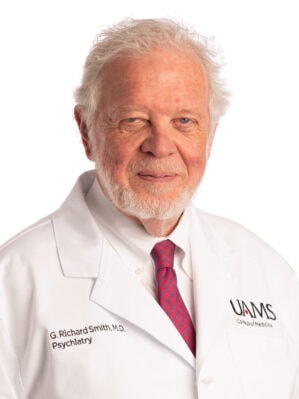
Dr. G. Richard Smith returned to the College of Medicine as Interim Dean on January 1, 2023, after the death of Dean Susan Smyth.
Dr. Smith had served on the faculty and as a leader in psychiatry in Arkansas for 32 years when he was originally appointed as dean and vice chancellor of the College of Medicine in 2013. Prior to this, he was the Marie Wilson Howells Professor and Chair in Psychiatry and Behavioral Sciences since 2001.
Dr. Smith was also the founding director of the UAMS Psychiatric Research Institute (PRI), which combines comprehensive inpatient and outpatient care, research and educational programs. Long active in research, he developed several highly regarded programs including the Division of Health Services Research. He was founding director of the Arkansas Center for Health Improvement and a leader in securing the state’s tobacco settlement funds to improve health for Arkansans.
Following his service as College of Medicine dean, Dr. Smith returned to PRI and the Department of Psychiatry in 2015. He again served as chair and director from 2018 until his initial retirement in 2021.
Susan S. Smyth, M.D., Ph.D.
June 2021 – December 2022

Dr. Susan Smyth was a nationally known cardiologist and translational scientist with extensive clinical, research, and academic leadership experience. She began serving as UAMS executive vice chancellor and College of Medicine dean in June 2021.
Dr. Smyth was recruited to UAMS from the University of Kentucky College of Medicine, where she had served as the Jeff Gill Professor of Cardiology, chief of the Division of Cardiovascular Medicine and director of the Gill Heart and Vascular Institute since 2011. Among many other leadership posts during her 15 years at Kentucky, she was senior associate director of the Kentucky Center for Clinical and Translational Science in 2015-2021 and director of the M.D./Ph.D. dual degree program in 2008-2019. From 2006, Dr. Smyth served as a cardiologist and funded investigator for the VA Health Care System.
She lent her expertise and service to numerous national scientific panels and professional organizations. Dr. Smyth was an elected member of the American Society for Clinical Investigation and past president of the Association of University Cardiologists. She was a Fellow of the American College of Cardiology (FACC) and Fellow of the American Heart Association, and served in leadership roles in both organizations.
Dr. Smyth graduated summa cum laude from Mount Holyoke College in South Hadley, Massachusetts, with a bachelor of arts in biology, before earning her doctorate in pharmacology and medical degree from the University of North Carolina in Chapel Hill, North Carolina. She completed her residency in internal medicine, including a year as chief resident, at University Medical Center in Stony Brook, New York. She continued her training with cardiology fellowships at Mount Sinai Medical School in New York and the University of North Carolina, where she joined the faculty in 2001. Dr. Smyth was recruited to the University of Kentucky in 2006.
Dr. Smyth passed away after a battle with cancer on December 31, 2022.
Christopher T. Westfall, M.D.,
2018-2021
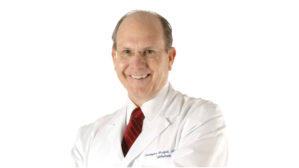
Dr. Christopher T. Westfall served at UAMS for more than 23 years, including eight years as chair of the Department of Ophthalmology and director of the Harvey & Bernice Jones Eye Institute prior to his service as dean and UAMS executive vice chancellor in 2018-2021.
The college implemented a number of educational initiatives under his leadership as dean, and Dr. Westfall worked to cement partnerships across the state to educate and train more primary care and other physicians for rural and underserved areas of Arkansas.
A West Point graduate, Dr. Westfall served in the military for 22 years, including as a surgeon in the U.S. Air Force and four years as the chief consultant in ophthalmology to the Air Force surgeon general, prior to his retirement at the rank of colonel and subsequent recruitment to UAMS in 1997.
Pope L. Moseley, M.D., 2015-2018
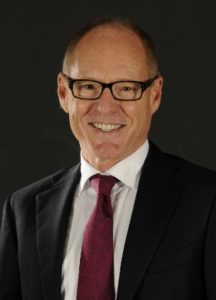
Dr. Pope L. Moseley, a leader in internal medicine and internationally recognized physician-scientist, served as dean of the College of Medicine and executive vice chancellor at the University of Arkansas for Medical Sciences (UAMS) in 2015-2018. In May 2017 Dr. Moseley was invested as the inaugural holder of the Arkansas Medical Society Distinguished Dean’s Chair in the College of Medicine. During his term, Dr. Moseley launched a major initiative to develop a top-tier biomedical informatics program.
Dr. Moseley came to UAMS from the University of New Mexico (UNM) School of Medicine, where he was a Distinguished Professor and led the Department of Internal Medicine as its Chair for 14 years.
G. Richard Smith, M.D., 2013-2015
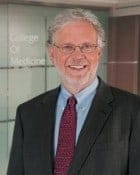
Dr. G. Richard Smith had served on the faculty and as a leader in psychiatry in Arkansas for 32 years when he was appointed as dean and vice chancellor of the College of Medicine in 2013. Prior to this, he was the Marie Wilson Howells Professor and Chair in Psychiatry and Behavioral Sciences since 2001.
Dr. Smith was also the founding director of the UAMS Psychiatric Research Institute (PRI), which combines comprehensive inpatient and outpatient care, research and educational programs. Long active in research, he developed several highly regarded programs including the Division of Health Services Research. He was founding director of the Arkansas Center for Health Improvement and a leader in securing the state’s tobacco settlement funds to improve health for Arkansans.
Following his service as College of Medicine dean, Dr. Smith returned to PRI and the Department of Psychiatry in 2015. He again served as chair and director from 2018 until his retirement in 2021.
Debra H. Fiser, M.D., 2006-2013
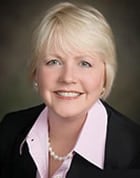
During her seven years as dean, Dr. Debra H. Fiser introduced many initiatives to strengthen the college’s educational, clinical and research programs. She made quality improvement and patient-centered care a priority. She established divisions of Genetics and Biomedical Informatics to reflect the rapidly changing world of medicine.
Dr. Fiser oversaw development of College of Medicine programs at UAMS’ satellite campus in Northwest Arkansas in 2009 and concurrent expansion of the freshman class size to help meet the need for greater numbers of physicians in Arkansas. During her tenure, the college expanded highly effective “active learning” methods in the medical curriculum as well as efforts to foster research collaborations in many areas.
The 1977 graduate joined the faculty in 1981. She served as professor and chair of the Department of Pediatrics from 1995 until becoming dean in 2006.
E. Albert Reece, M.D., Ph.D., MBA, 2002-2006
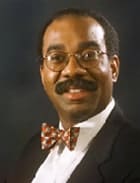
During four years as dean and Vice Chancellor, Dr. E. Albert Reece led the College of Medicine through several clinical care, research, and education achievements. A maternal-fetal medicine specialist and researcher, Dr. Reece enhanced the COM’s research enterprise with the recruitment of 30 funded scientists, expansion of research programs and doubling of the COM’s research funding. He oversaw the creation of the state’s first liver transplant program. Also during this time, the COM increased pass rates of medical students on external exams and began statewide and nationally recognized telemedicine programs.
The Jamaica, West Indies, native received his medical degree from New York University School of Medicine, his doctorate in biochemistry from the University of West Indies, and his master’s in business administration from the Fox School of Business and Management at Temple University. He was the Abraham Roth Professor and Chair of Obstetrics, Gynecology, and Reproductive Sciences at Temple University School of Medicine in Philadelphia before coming to Arkansas. Dr. Reece left UAMS to become dean of the School of Medicine and vice president for medical affairs at the University of Maryland.
John P. Shock, M.D., Interim, 2000-2002
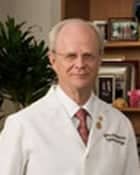
Dr. John Shock, former chairman of the Department of Ophthalmology, guided the college during a time of transition as former dean I. Dodd Wilson, M.D., began his appointment as chancellor of UAMS. Dr. Shock joined the UAMS faculty as department chairman in 1979. Under his guidance the department experienced much growth as it became a UAMS Center of Excellence – the Harvey and Bernice Jones Eye Institute.
I. Dodd Wilson, M.D., 1986-2000

Dr. I. Dodd Wilson came to UAMS in 1986 as professor and dean of the College of Medicine from the University of Minnesota Medical School, where he was a professor and vice chairman of the Department of Medicine. He was named executive vice chancellor at UAMS in 1994 and served as UAMS chancellor from 2000 to 2009.
UAMS and the COM saw remarkable changes while Dr. Wilson was dean in the late 1980s and early 1990s, with over 1,000 full- and part-time faculty, more than 600 residents and almost 700 medical and graduate students. Dr. Wilson led the school into the next century, recruiting new chairs and internationally renowned physicians to UAMS. He fostered substantial research growth both while serving as dean and chancellor. Federal grants and contracts grew from about $6 million in 1984 to about $106 million in 2005, while funding for the COM from the National Institutes of Health doubled every five years.
Dr. Wilson is past chair of the Council of Deans of the Association of American Medical Colleges (AAMC), and served on its Executive Committee. He received his medical degree from Harvard Medical School. Dr. Wilson was the inaugural recipient of the Harry P. Ward Chancellor’s Chair, the first chancellor’s chair endowed at an Arkansas university.
Glen Baker, M.D., Interim, 1986

Pathologist Dr. Glen Baker stepped up to the role of acting dean replacing interim dean Peter Kohler, M.D. He is currently a Professor Emeritus of Pathology and has been a UAMS faculty member since 1966.
Peter O. Kohler, M.D., Interim, 1985-1986
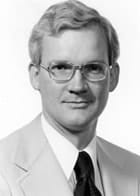
Dr. Peter Kohler was recruited by Dean Thomas Bruce, M.D., in 1977 to be chair of the Department of Medicine. He strengthened the department’s efforts in scholarship and research with appointments in geriatric medicine, hematology-oncology, cardiovascular and pulmonary disease, nephrology and endocrinology/metabolism. His leadership abilities translated to his appointment of interim dean. After leaving Arkansas, Dr. Kohler served for 18 years as president of the Oregon Health & Science University. He returned to UAMS in 2007 as vice chancellor for the Northwest Arkansas Region.
Thomas A. Bruce, M.D., 1974-1985
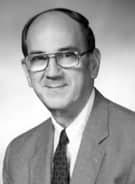
Dr. Thomas Bruce’s 11 years as Dean were marked by comprehensive efforts to enhance medical education and improve the distribution of physicians in Arkansas. Based on his initiatives, new programs were created in family and community medicine and new divisions were established in emergency medicine, rehabilitation medicine, and medical ethics/humanities.
A 1955 COM graduate, Dr. Bruce created faculty councils to help administer the school: a Council for Academic Affairs to make recommendations on educational programs, a Research Council for scholarly initiatives, and a Council of Departmental Chairmen for administrative matters. A nine-member, elected Executive Committee was established as an advisory group to the dean.
Dr. Bruce also oversaw the recruitment of chairs in 19 of the 21 departments and doubled the number of full-time faculty. He followed suit with an initiative to achieve faculty and student consensus on key programs. Faculty members defined four broad missions, the chief of which was to educate the number and kinds of physicians needed in Arkansas. A 10-year effort was then implemented to aggressively expand the primary care training programs and help students understand rural practice. AHEC course options were expanded and residency programs were strengthened.
During Dr. Bruce’s tenure, the medical center was reorganized as a separate campus within the UA system, called the University of Arkansas for Medical Sciences. The medical school changed its name from the School of Medicine to the College of Medicine. In 1979, the campus celebrated its centennial.
Winston K. Shorey, M.D., 1961-1974
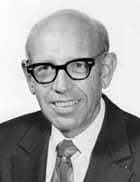
Dr. Winston Shorey provided vibrant leadership during more than a decade of growth that saw the College of Medicine rise to serve the citizens of Arkansas. Among many accomplishments, he played a prominent role in planning and implementing the family practice residency program. Most notably, Dr. Shorey and Vice President James L. Dennis developed the Area Health Education Center (AHEC) plan for Arkansas under the “school without walls” banner. In his last years as dean, Dr. Shorey was charged with implementing the AHEC plan, and he organized the regional programs. He then became associate dean for the AHEC programs.
Dr. Shorey also significantly enhanced the basic sciences and clinical programs while dean. Four basic science departments were reorganized, and new chairmen were recruited in six departments. Dr. Shorey revised the medical curriculum. He also developed the Division of Biometry around a research computer laboratory and expanded the medical library. Dr. Shorey created the faculty group practice organization, the University Medical Group. To enhance medical school support, he organized the Arkansas Caduceus Club, a private group of alumni and other state physicians.
The Education I building was named in his honor in 1981, and the Shorey Award is given each year to a graduating senior who manifests the personal attributes of an ideal physician.
F. Douglas Lawrason, M.D., Interim, 1955-1960
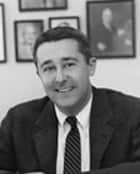
Dr. Doug Lawrason was recruited to the dean and provost post by University of Arkansas President John Tyler Caldwell because of his desire to pursue clinical excellence and his high regard for fundamental biomedical research. He worked to improve the curriculum and expand the full-time faculty and capacity of the graduate and residency programs. He engineered the move of clinical faculty and students into the new hospital building on West Markham Street — UAMS’ current campus — in 1956. A student dormitory was completed during his tenure in 1959. Dr. Lawrason also raised seed money for the T.H. Barton Building, the first building on campus devoted solely to research.
Hayden Nicholson, M.D., 1950-1955
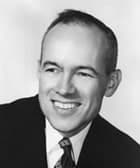
Dr. Hayden Nicholson worked closely with University of Arkansas President Lewis Webster Jones to implement successful public and political campaigns to secure state appropriations needed to complete the new medical center. Another achievement was the recruitment of faculty members in psychiatry, medicine, neurology, and pediatrics that became collective contributors to each department. He was the first dean to focus on rural state needs by emphasizing general practice careers and reinvigorating the rural preceptorship program. He also expanded internship and residency opportunities in the state and gave special priorities for admission to those who agreed in advance to practice in rural areas.
William C. Langston, M.D., Interim, 1948-1950
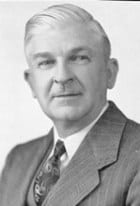
Known for his enthusiastic teaching style and multi-dimensional blackboard sketches, Dr. Bill Langston joined the school in 1930 as an instructor of anatomy. He was then selected as head of the Department of Anatomy in 1941 before he agreed to serve as acting dean of the School of Medicine. Dr. Langston recruited several major faculty members while dean. After his term, he returned to the Department of Anatomy for another seven years.
Joseph T. Roberts, Jr., M.D., Ph.D., 1947-1948
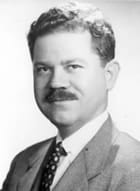
Serving for one year as dean, Dr. Joe Roberts initiated Medical Grand Rounds on a weekly basis, established a Dean’s Committee for the VA Hospital and a statewide committee on continuing medical education. It was during his term that Edith Irby was accepted into the freshman class as the first African-American student in any Southern medical school.
Benjamin B. Wells, M.D., Ph.D., Interim, 1947

Dr. Benjamin Wells began as an assistant professor of medicine and clinical pathology in 1942. During his few months as dean, he worked to improve academic standards, the quality of teaching and research programs, and to expand the base of postdoctoral residency education.
H. Clay Chenault, M.D., 1946-1947

The 1927 graduate was selected as dean and vice chancellor to share the vision of a modern academic medical center. In just a year, department faculties defined their goals and objectives and Dr. Chenault set up an organizational structure that separated the School of Medicine from the administrative and service activities of the hospital. In 1947, he became the first vice president for medical affairs. His hand in the initial plans for the medical center is remembered as one of his greatest achievements.
Byron L. Robinson, M.D., 1941-1946
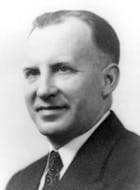
Dr. Byron Robinson led the School of Medicine as the ninth dean and maintained a credible academic program in the midst of World War II when the school moved into an accelerated year-round curriculum to get students into the field earlier. Dr. Robinson also revised the clinical schedule to rotate students though a number of community hospitals to broaden the base of clinical learning. He joined the school in 1925 as a member of the anatomy faculty.
Stuart P. Cromer, M.D., Ph.D., 1939-1941
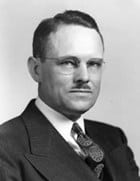
Dr. Stuart Cromer is credited with recruiting the first full-time clinical faculty members and instituting a full schedule of clinical bedside instruction. He created an executive committee of department heads to address policy issues and held full faculty meetings monthly. He also led efforts to renovate the City Hospital to accommodate 200 beds. In academia, he pushed standards by instituting competitive college grades and the MCAT for all applicants. Dr. Cromer’s guidance also set up incentives and awards for scholastic achievement within the medical school.
Frank Vinsonhaler, M.D., 1927-1939
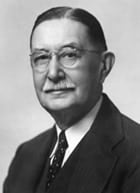
Dr. Frank Vinsonhaler approached his deanship with three goals: improve and expand clinical facilities, strengthen educational programs, and broaden the base of public and professional support for the school. One of his first actions was lobbying the passage of a basic science test law and gaining legislative funds to build a new medical school. Determined to solve problems that threatened the institution’s academic standing, his mission was to secure funds. Despite funding limits by the deepening depression, Dr. Vinsonhaler secured federal money through the Public Works Administration, and a new six-story building was constructed and opened on McAlmont Street in 1935.
Arthur R. Stover, M.D., Interim, 1923-1924
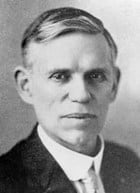
Dr. Arthur Stover started as a professor of chemistry, physiology, and pharmacology in 1903 and served as the interim dean until Dr. Morgan Smith was then reinstalled in 1924. Dr. Stover continued to serve on the faculty until 1931.
Morgan Smith, M.D., 1912-1923, 1924-1927
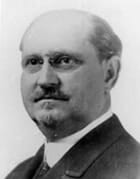
Dr. Morgan Smith joined the Medical Department as an instructor of physiology in 1904 and became the fifth School of Medicine dean in 1912. He briefly resigned to go into private practice but accepted the deanship again in 1924. Under his leadership, five full-time basic science faculty positions were established and scientific research began. Not only was the curriculum strengthened, but summer programs were initiated to allow practicing physicians to hone their skills. Dean Smith also encouraged the integration of the clinical pathology lab with the State Board of Health which established new resources and a large volume of specimens. His personal credo to medical students was, “Rise early, go to bed early, live close to nature, have high ideals, take less medicine and more advice.”
James H. Lenow, M.D., 1907-1912

Dr. James Lenow, the first professor of genito-urinary disease and syphilis, set out from the start as dean to expand faculty, strengthen the curriculum, add laboratory and classroom space, and gain accreditation for the school. By 1910, under his leadership, standards were set to require a high school diploma for medical school admission for the first time. In 1911, the Medical Department and competing College of Physicians and Surgeons integrated under the University of Arkansas and comprised the new faculty body.
Edwin Bentley, M.D., 1904-1907
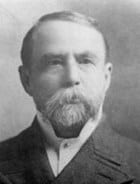
As the third president of the faculty, Dr. Edwin Bentley was also a founding member of the Medical Department and served as Professor of the Institutes and Practice of Medicine. He shared the vision of establishing a medical school in Little Rock and his professionalism earned him election as school president. Dr. Bentley served when the competing College of Physicians and Surgeons opened in 1906 and he pushed the administration to strengthen the school’s quality and recruit new medical faculty.
James A. Dibrell, Jr., M.D., 1886-1904
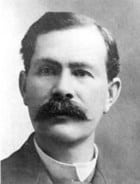
After Dr. P.O. Hooper resigned as president of the faculty, Dr. James Dibrell followed as the school’s presiding officer. Dr. Dibrell was one of the eight founders of the school and the first professor of anatomy. He continued the success of the school attained during the first 25 years, improving its statewide reputation for excellence and integrity.
Philo Oliver Hooper, M.D., 1879-1886
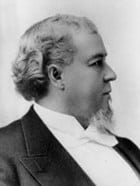
As the first president of the faculty, Dr. P.O. Hooper opened the doors to Arkansas’ first and only medical school, which admitted 22 students in the inaugural class. Dr. Hooper and his associates organized the Little Rock and Pulaski County Medical Society to develop strong professional standards and campaigned for a medical school in the community. Their vision was realized with the approval of a medical department under the Arkansas Industrial University’s charter. During his seven years as principal of the department, the school was on a steady course to providing an exceptional medical education. Today, one of the main streets on campus is named Hooper Drive in his honor.
